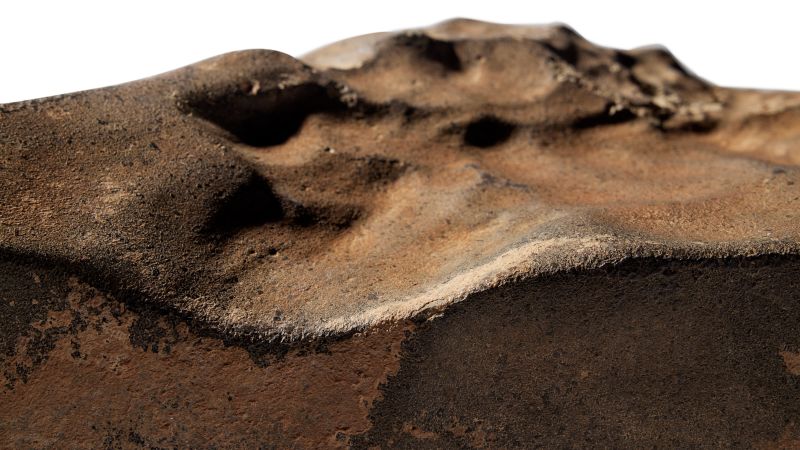The world of astronomical artifacts has recently been set ablaze by the scheduled auction of an extraordinary specimen: a meteorite known as NWA 16788. This historic meteorite, which is the largest known piece of Mars to exist on Earth, is expected to garner an astounding price of up to $4 million at Sotheby’s New York auction taking place on July 16. This remarkable event highlights not only the value of such cosmic treasures but also raises questions about their ultimate fate and the ethical implications behind their sale.
Weighing in at an impressive 54 pounds (24.5 kilograms), NWA 16788 is significantly larger than most Martian meteorites, which are typically mere fragments. Discovered in November 2023 within the remote Agadez region of Niger, this meteorite is deemed a “monumental specimen,” measuring around 70% larger than the next most considerable Martian piece to have been located on Earth, as per statements from Sotheby’s. Given that only around 400 Martian meteorites have ever been identified on our planet, the significance of this particular piece cannot be overstated.
Cassandra Hatton, vice chairman of science and natural history at Sotheby’s, extols the meteorite’s extraordinary characteristics, explaining, “NWA 16788 is a discovery of extraordinary significance — the largest Martian meteorite ever found on Earth, and the most valuable of its kind ever offered at auction.” Hatton emphasizes that the process of atmospheric entry has weathered the meteorite, leading to its unique features such as its immense size and distinct red coloration. These qualities not only set it apart but also provide an invaluable connection to our celestial neighbor, Mars, which has fascinated humanity for centuries.
Further examination of NWA 16788 has uncovered intriguing insights into its origin. Analysis suggests that the meteorite was likely dislodged from the Martian surface due to an asteroid impact powerful enough to turn portions of it into glass. Additionally, its surface is marked by a glassy crust, a remnant of the intense conditions it endured while penetrating Earth’s atmosphere. This sort of geological history makes the meteorite not just a collector’s item but an essential piece of scientific inquiry.
However, the prospect of selling such a significant piece of cosmic history has sparked debate among scientists and enthusiasts alike. Many express concern that the meteorite, once sold, may vanish into obscurity, potentially ending up in the private vault of a wealthy collector. Professor Steve Brusatte from Scotland’s University of Edinburgh articulated these concerns, stating, “It would be a shame if it disappeared into the vault of an oligarch. It belongs in a museum, where it can be studied, and where it can be enjoyed by children and families and the public at large.”
Conversely, Julia Cartwright, a planetary scientist at the University of Leicester, argues that the marketplace for meteorites can drive scientific discovery. She pointed out, “Ultimately, if there was no market for searching, collecting and selling meteorites, we would not have anywhere near as many in our collections — and this drives the science!” Cartwright notes the collaborative relationship between collectors and researchers, stating that, without individual collectors, our understanding of these celestial materials would be severely diminished.
Moreover, future research possibilities remain hopeful. Cartwright confirmed that a reference sample from this meteorite has been preserved at the Purple Mountain Observatory in China, ensuring that scientific inquiry can continue irrespective of the auction outcome. While many await the auction results and ponder where NWA 16788 may ultimately reside, interest in the meteorite’s composition and history is likely to endure, potentially leading to further scientific insights.
This auction, reminiscent of past sales such as the February 2021 event at Christie’s, has the potential to reshape how we perceive Martian meteorites in the contemporary scientific and collecting community. The previous auction saw another Martian meteorite with atmospheric remnants sell for $200,000, far surpassing its initial estimate. As excitement builds for NWA 16788, this auction could not only revolutionize the valuation of space artifacts but also prompt critical discussions about their stewardship in the realm of scientific research and public education.












